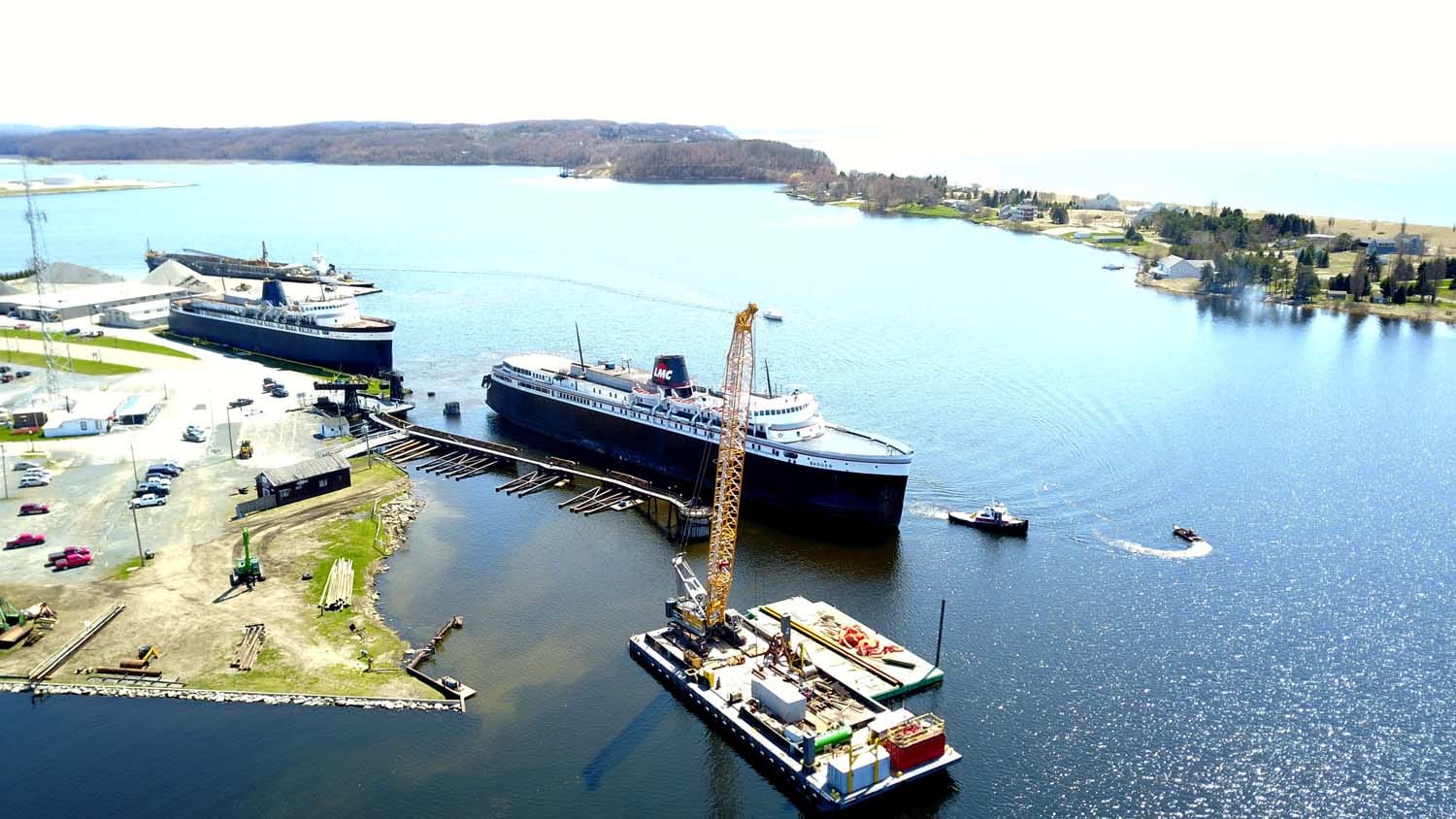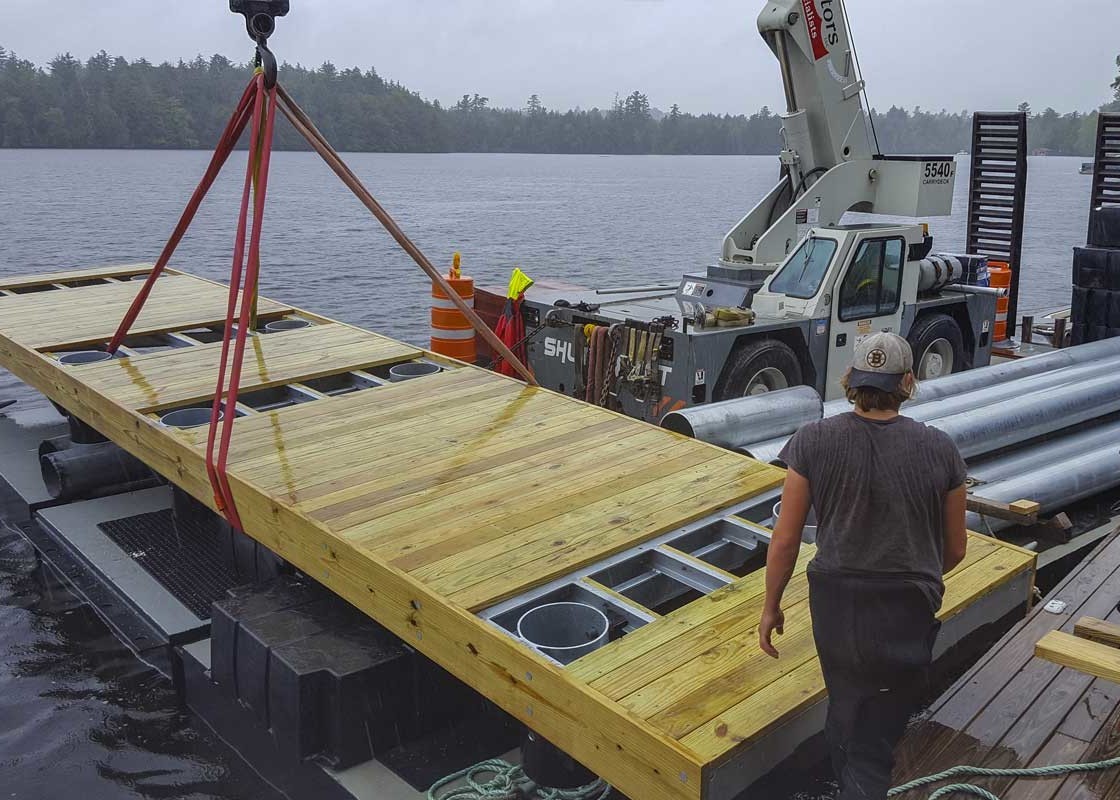Usual Problems That Bring About Expensive Dock Repairs
Effective Dock Fixing Techniques: Ensuring Architectural Stability
Ensuring the architectural honesty of docks through efficient repair strategies is critical for the durability and security of marine centers. Subsequently, selecting the appropriate repair work materials, such as corrosion-resistant alloys and composite materials, is vital for resilience.
Assessing Dock Damage
Examining dock damages is a vital initial step in guaranteeing the structural honesty and safety of any kind of docking center. This preliminary assessment includes a thorough examination to identify both hidden and noticeable problems. Secret elements to examine consist of the dock's structure, pilings, outdoor decking, and equipment. Each part must be looked at for signs of wear, rot, rust, or various other types of destruction that can jeopardize the structural stability.
Structural engineers or certified inspectors normally perform these assessments making use of specialized methods and tools. For instance, undersea inspections may use sonar equipment or remotely ran lorries (ROVs) to find submerged damage. Over water, visual assessments are matched by utilizing wetness meters and various other diagnostic devices to reveal underlying problems not right away noticeable to the nude eye.

Picking Repair Products
Choosing the appropriate repair service products is a critical action in the dock repair procedure, one that straight influences the durability and performance of the fixed framework. Product selection should be driven by aspects such as ecological problems, load-bearing requirements, and compatibility with existing dock components. Wood is a traditional option for anchors due to its natural durability and visual appeal. Selecting the right type of wood, such as pressure-treated lumber or naturally rot-resistant species like cedar or teak wood, is crucial to withstand water environments.
Along with wood, composite products are significantly preferred as a result of their resilience and reduced maintenance needs. Composites, generally made from a mix of plastic and wood fibers, provide superb resistance to rot, pests, and UV damage. For metal docks, picking corrosion-resistant alloys such as galvanized steel or marine-grade aluminum is important to avoid corrosion and ensure structural honesty in saline water conditions.
Epoxy resins and marine-grade sealants are essential for fixing fractures and securing joints, providing a waterproof obstacle and improving the dock's overall stamina. By diligently selecting high-grade materials, dock fixings can attain durable outcomes, consequently protecting versus future destruction and making sure risk-free, trusted use.
Architectural Support Strategies
Efficient structural reinforcement methods are vital in ensuring the stability and longevity of dock fixings. One basic approach includes making use of steel or composite support bars (rebar) within concrete structures. Rebar gives extra tensile strength, preventing fractures and dispersing tons more uniformly. This method is especially effective for docks subjected to heavy lots or extreme ecological problems.
Another necessary method is the application of fiber-reinforced polymers (FRP) These products offer high strength-to-weight ratios and superb resistance to corrosion, making them suitable for strengthening wooden or concrete anchors. FRP can be used in sheets or strips and bound with epoxy materials to improve architectural honesty.
Supporting and anchoring systems also play an important duty in structural support. Cross-bracing, making use of steel or wood beams, can neutralize lateral pressures, lowering guiding and motion. Securing systems, such as helical piers or driven stacks, provide a stable structure by transferring loads to deeper, much more secure soil layers.
Lastly, the integration of load-distribution plates can help disperse weight much more uniformly throughout the dock's surface area, alleviating local stress and anxiety points. These strategies jointly make certain look at here now that docks remain durable and secure, with the ability of standing up to the roughness of their functional environment.
Advanced Repair Work Approaches

An additional innovative technique entails undersea welding, which enables repairs to be carried out without the requirement to dewater the area. This technique is especially useful for addressing architectural issues in immersed dock components, ensuring minimal interruption to procedures. Improved welding techniques, paired with robotic systems, deliver accuracy and reliability, therefore prolonging the lifespan of check out here the dock.
Additionally, cathodic security systems are implemented to stop corrosion in metallic dock frameworks. By utilizing sacrificial anodes or pleased existing systems, these methods effectively alleviate the electrochemical procedures that result in material damage.
Finally, advanced monitoring innovations, such as architectural health and wellness monitoring (SHM) systems, provide real-time information on the condition of dock structures. These systems enable positive upkeep and prompt treatments, ultimately making sure the long-lasting structural integrity of the dock.
Maintenance and Avoidance
Upkeep and avoidance are fundamental principles that underpin the longevity and safety and security of dock structures. Routine inspections are extremely important, allowing for early detection of wear and tear, prospective weak points, and ecological impacts. A proactive strategy, entailing regular look for corrosion, rot, and architectural shifts, alleviates costly repair work and extends the dock's functional life.
Preventative procedures should include using safety finishings to steel components to guard versus rust and using treated timber to resist decay. Furthermore, ensuring appropriate drainage and site link air flow can protect against water build-up, which is a common root cause of architectural destruction. Integrating quality materials and adhering to producer guidelines during building and fixing phases additionally play crucial roles in enhancing toughness.

Educating employees in dock upkeep ideal techniques makes sure regular application of preventative measures. Leveraging technological breakthroughs, such as drones for examinations and sensors for real-time surveillance, can additionally enhance upkeep efforts. By focusing on maintenance and prevention, dock proprietors can ensure architectural integrity, operational security, and cost-efficient management over the dock's lifespan.
Final Thought
In conclusion, preserving the architectural integrity of marine centers necessitates comprehensive dock repair service strategies. Advanced repair techniques, paired with normal upkeep methods, ensure the dock remains secure and functional under varied ecological conditions.
Ensuring the structural honesty of docks with efficient repair strategies is extremely important for the longevity and security of marine facilities.Picking the ideal fixing materials is a critical step in the dock remediation procedure, one that straight affects the long life and performance of the fixed framework.Reliable architectural support strategies are important in making sure the security and longevity of dock fixings. By prioritizing maintenance and prevention, dock owners can guarantee structural honesty, functional safety and security, and cost-effective monitoring over the dock's life-span.
In final thought, preserving the structural stability of aquatic facilities requires comprehensive dock repair work techniques.